 |
 |
 |
| |
Efficacy and safety of lersivirine vs efavirenz in antiretroviral treatment-naïve HIV-1-infected patients: Week 48 primary analysis results from an ongoing, multicenter, randomized, double-blind, Phase 2b trial (Study A5271015)
|
| |
| |
Reported by Jules Levin
6th IAS Conference, July 17-20, 2011, Rome, Italy
From Jules: from the separate resistance poster looking at baseline pre-existing resistance using utra-deep sequencing-
"Lersivirine (UK-453,061) was developed as a next-generation NNRTI, in part incorporating the retention of antiviral activity against the most common first generation NNRTI RAMs (e.g. K103N, Y181C, and G190A). The result is an NNRTI with a unique resistance profile...... Week 48 response was observed with LRV in patients with
minority species K103N."
Pozniak: 'Next generation NNRTI, unique binding means active against 181 mutation.......in >100,000 viral load group at baseline lersivirine performed less well than EFV (62%, 75% vs 83% shown in slide below)....the poor performances were not seen in geographical Region A but only in geographical Region B (So Africa: 72%, 68% vs 83% shown in slide below overall, and in >100k Region B 50%, 38% & 78%, see slides 8 & 9 below, 'Efficacy by Region')....half the patients with viral failure in the lersivirine >100,000 group were in So Africa and 4/5 failures in the >100k group in So Africa were non-adherent....so nonadherence by patients in So Africa in >100k group is responsible for the poor showing by lersivirine in the >100k group, the study patients numbers are very small so can be driven by such an occurrence....after failing lersivirine patients appeared to be sensitive to EFV....both doses of lersivirine were lipids neutral, good effects on LDL compared to EFV, also on total cholesterol and on tryglicerides compared to EFV, [from Jules: HDL cholesterol increased more on EFV....ratio of total/HDL cholesterol was similar between EFV & lersivirine'
P Vernazza,1 C Wang,2 A Pozniak,3 E Weil,2 P Pulik,4 DA Cooper,5 R Kaplan,6 A Lazzarin,7 H Valdez,8 J Goodrich,9 C Craig,10 J Mori,10
M Tawadrous2
1Cantonal Hospital, St. Gallen, Switzerland; 2Pfizer Inc., Groton, CT, USA;
3Chelsea & Westminster Hospital, London, UK; 4Provincial Infectious Hospital of Warsaw, Warsaw, Poland; 5Kirby Institute, University of New South Wales, Sydney, Australia; 6Desmond Tutu HIV Foundation, Cape Town, South Africa; 7Universita Vita-Salute San Raffaele, Milan, Italy; 8Pfizer Inc., New York, NY, USA; 9ViiV Healthcare, Research Triangle Park, NC, USA; 10Pfizer Global Research & Development, Sandwich Laboratories, Kent, UK
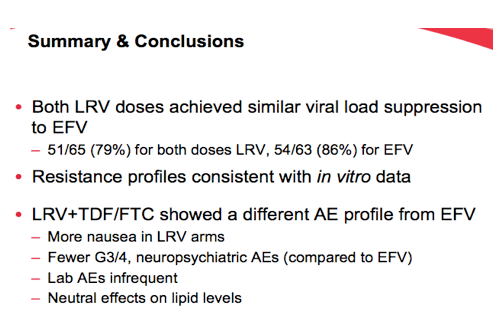
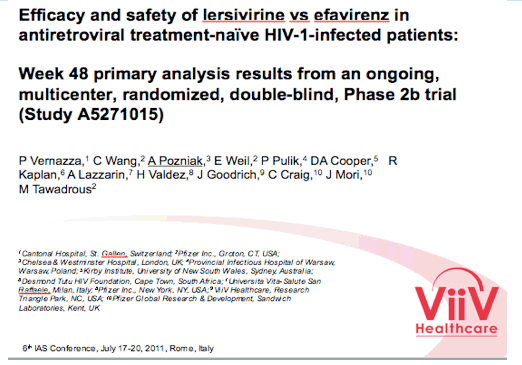
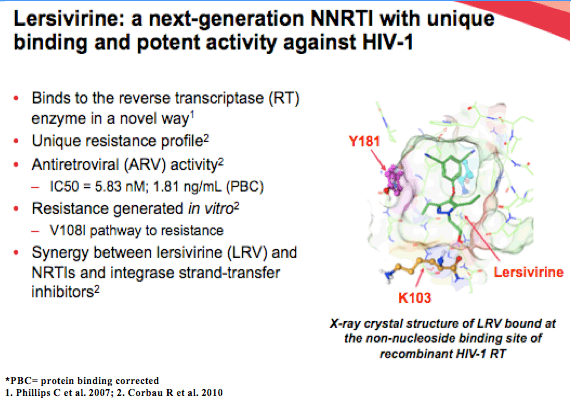
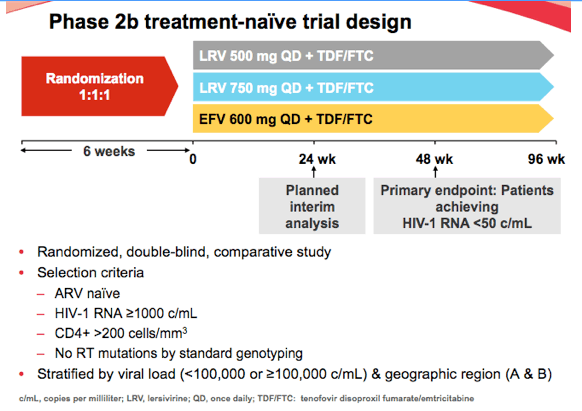
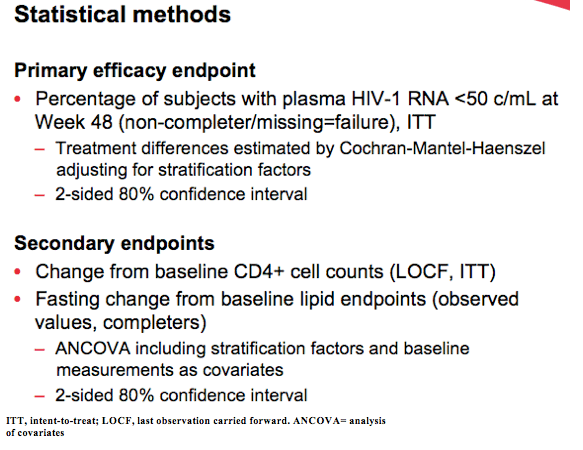
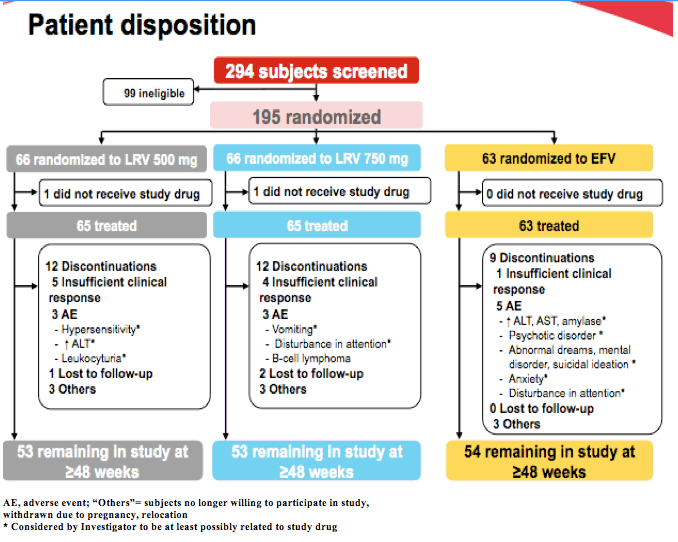
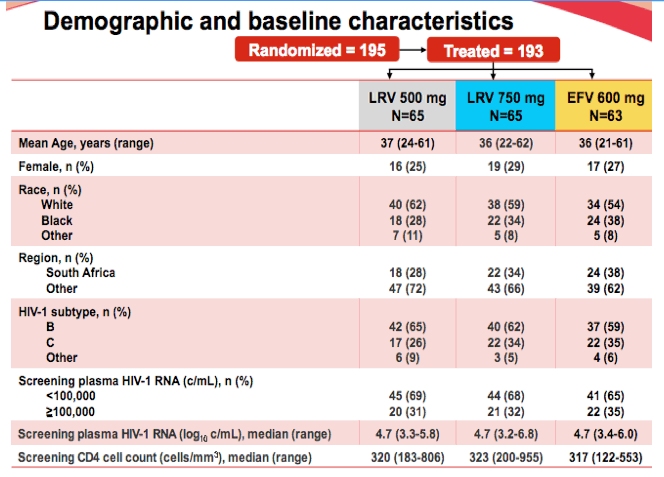
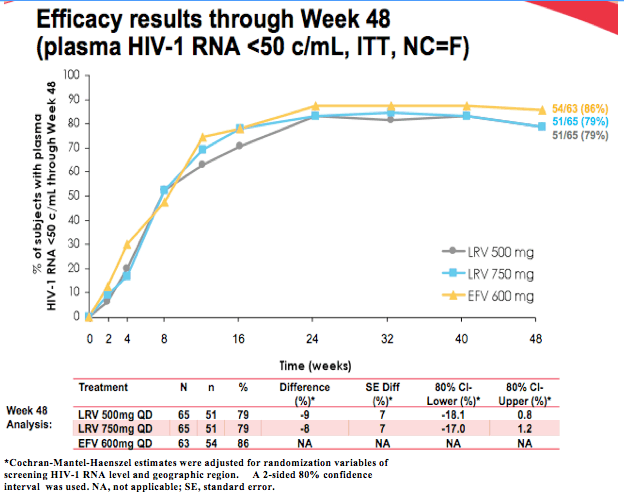
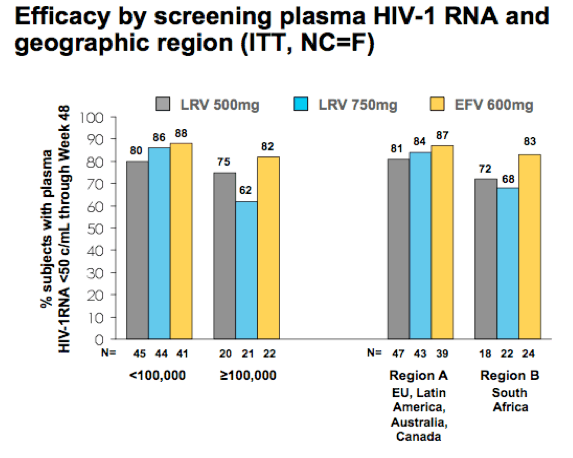
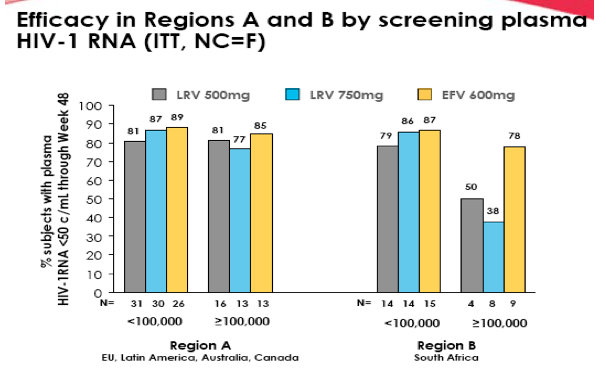
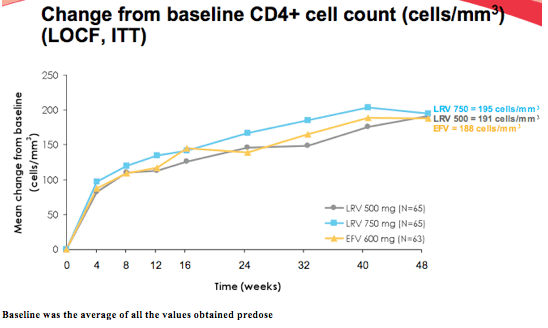
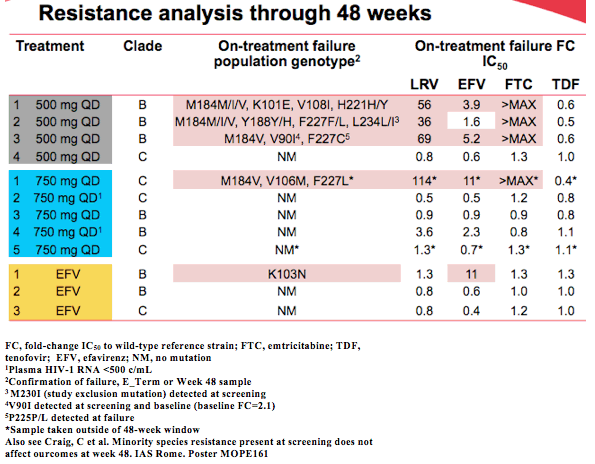
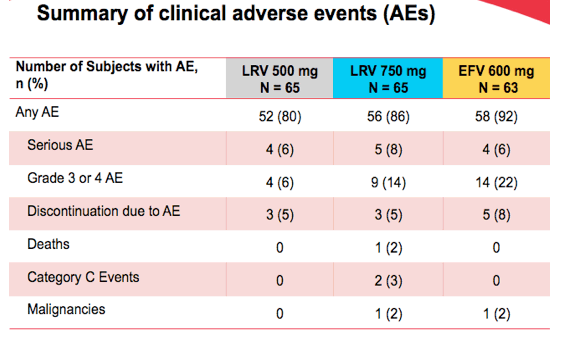
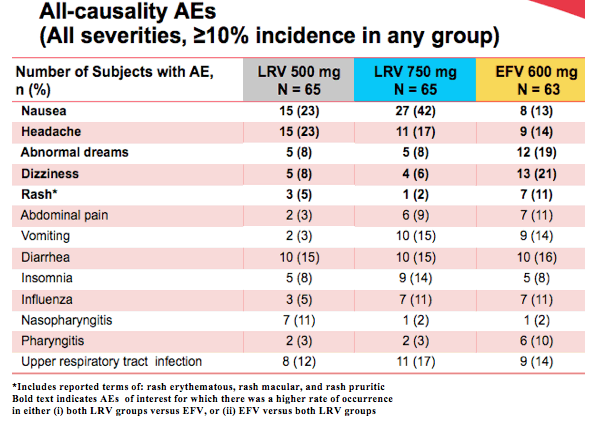
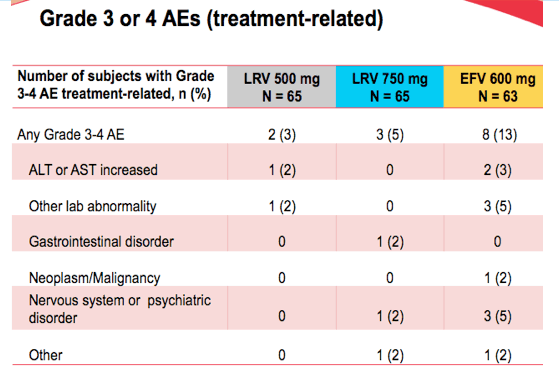
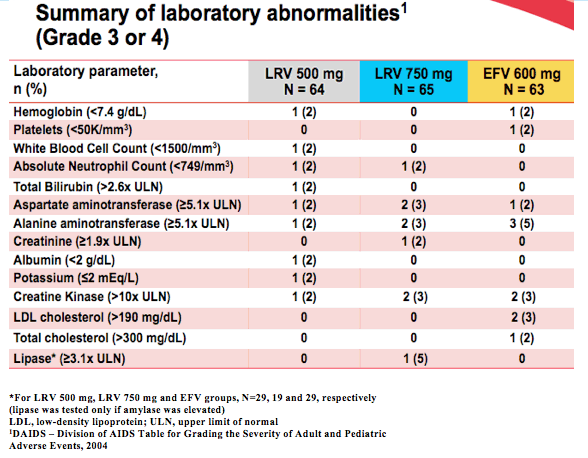
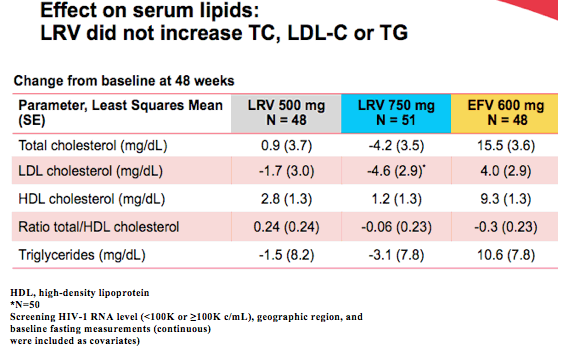
----------------------------------
Pre-Existing Baseline NNRTI RESISTANCE in this Study:
Minority species resistance (Ultra-Deep Sequencing) present at screening does not affect outcomes at Week 48 in lersivirine (UK-453,061) Phase 2b study A5271015 in treatment-naïve patients
C Craig,1 C Wang,2 N Cusack,2 J Mori,1 B Taillon,3 M Westby,1 M Tawadrous2
1Pfizer Global Research and Development, Sandwich, Kent, UK; 2Pfizer Inc., Groton, CT, USA;
3454 Life Sciences, A Roche Company,
Branford, CT, USA
"Week 48 response was observed with LRV in patients with minority species K103N.....Among the LRV treated patients, ≥1 minority LRV RAM was detected in virus from nine patients (8%) (three received LRV 500 mg and six received LRV 750 mg); eight of the nine responded to therapy through Week 48. In the remaining patient (K101E/F227L), the viral load response over time was consistent with poor adherence. Patients in the EFV treated group with minority LRV RAMs at Screening (N=10) were not associated with virologic failure. The EFV RAM, K103N, was observed in three subjects at Screening; all were treated with LRV and responded to therapy."
ABSTRACT
Background: Lersivirine (LRV, UK-453,061) is an NNRTI with a unique resistance profile. Study A5271015 is a 96-week, international, double-blind, randomized, Phase 2b study in HIV-1-infected, treatment-naïve patients, to assess the antiviral activity and safety of LRV (500/750 mg once daily [QD]) or efavirenz (EFV, 600 mg QD), each combined with tenofovir DF/emtricitabine (300 mg/200 mg QD). Minority species NNRTI resistance is a clinically significant problem in treatment-naïve HIV-1-infected persons. The objective of this analysis was to assess the impact of minority species resistance-associated mutations (RAMs) on response through Week 48.
Methods: Ultra-deep sequencing was performed successfully on 179/193
Screening samples across all treatment groups. Association between IAS USA or LRV minority RAMs (i.e. present in >1% to <20% of sequences) and virologic outcome at Week 48 was examined. Mutations observed using population genotyping were excluded.
Results

Among the LRV treated patients, ≥1 minority LRV RAM was detected in virus from nine patients (8%) (three received LRV 500 mg and six received LRV 750 mg); eight of the nine responded to therapy through Week 48. In the remaining patient (K101E/F227L), the viral load response over time was consistent with poor adherence. Patients in the EFV treated group with minority LRV RAMs at Screening (N=10) were not associated with virologic failure. The EFV RAM, K103N, was observed in three subjects at Screening; all were treated with LRV and responded to therapy.
Conclusions: The prevalence of LRV minority species RAMs was low and not associated with failure. Week 48 response was observed with LRV in patients with minority species K103N.
Introduction
The presence of low-frequency (minority) resistance-associated mutations
(RAMs) has been associated with a poor response to antiretroviral therapy.1,2
Non-nucleoside reverse transcriptase inhibitors (NNRTIs) are used widely in anti-HIV-1 regimens and are generally effective in treatment-naïve patients. However, increased risk of virologic failure has been associated most strongly with NNRTI-resistant minority species (hazard ratio 2.6; 95% CI 1.9, 3.5).2
Lersivirine (UK-453,061) was developed as a next-generation NNRTI, in part incorporating the retention of antiviral activity against the most common first generation NNRTI RAMs (e.g. K103N, Y181C, and G190A). The result is an NNRTI with a unique resistance profile.
Study A5271015 is an on-going 96-week, Phase 2b study in HIV-1-infected, treatment-naïve patients, to assess the antiviral activity and safety of lersivirine compared with efavirenz, each in combination with tenofovir
DF/emtricitabine.
The objective of this analysis was to assess the impact of minority species
RAMs on response at Week 48.
|
| |
|
 |
 |
|
|